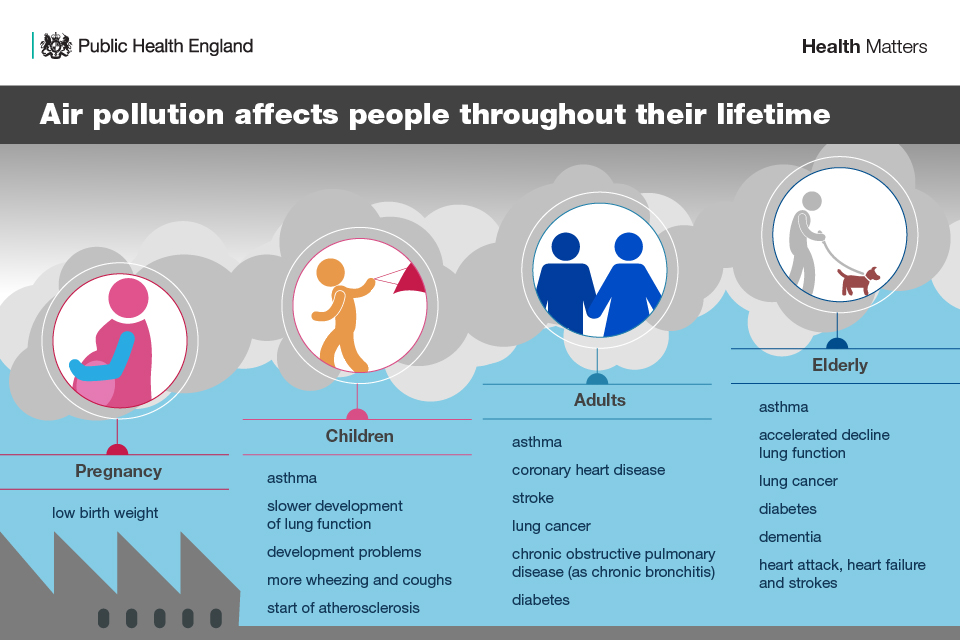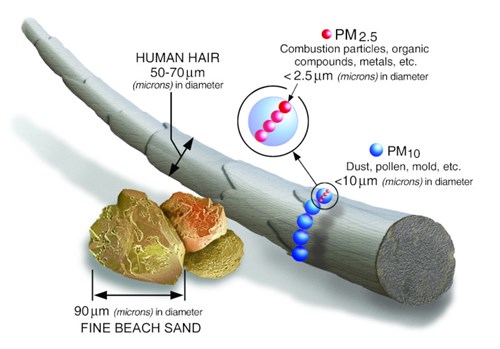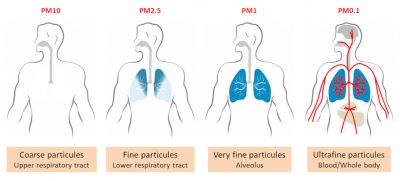

Air pollution impacts on health throughout our lifetimes. Children and older people are at the greatest risk from the long term impacts of air pollution.
Air pollution has been linked to many health issues including asthma, lung cancer, coronary heart disease, strokes and dementia.
Particulate matter (PM) and nitrogen dioxide (NO2) are both major components of urban air pollution and are the main pollutants measured in Bradford.

Image: Health effects of air pollution LGA, Defra and PHE Air Quality: A briefing for directors of Public Health (PDF).
More information on the health impacts of air pollutants is available here:
The size of particles and length of exposure to them determines the extent of their health effects.
Particle size is usually measured in microns (1μm is a millionth of a meter). A human hair is about 90 microns in diameter so most particles are very small.

Image: Comparison of diameters taken from Airborne particulate matter and their health effects, the Encyclopedia of the Environment used under the terms of the Creative Commons BY-NC-SA license.
Particles larger than 10 microns are mainly deposited in the nose or throat but particles smaller than 10 µm (often referred to as PM10) can reach deeper into the lungs and pose a greater health risk.
Very fine particles, smaller than 2.5 microns (often referred to as PM2.5) pose the greatest health risk. These can interfere with gas exchange processes in the lungs and some may even enter the blood stream and reach the brain. Long-term exposure to PM2.5 has been linked to cardiovascular disease, strokes and many respiratory diseases. PM has also been classified as carcinogenic and is linked to the occurrence of lung cancer in non-smokers. Exposure to PM2.5 has also been linked to reduced brain function (resulting in lower IQ in children) and conditions such as dementia.

Image: Lung penetration particles taken from Airborne particulate matter and their health effects, the Encyclopedia of the Environment used under the terms of the Creative Commons BY-NC-SA license.
The size of particles and length of exposure to them determines the extent of their health effects. Particle size is usually measured in microns (1μm is a millionth of a meter). A human hair is about 90 microns in diameter so most particles are very small.
Due to the health risks associated with exposure to PM2.5 we are currently developing a Particle Reduction Strategy (PRS).
Information about pollutant concentrations in Bradford can be found here: Air quality monitoring in Bradford.